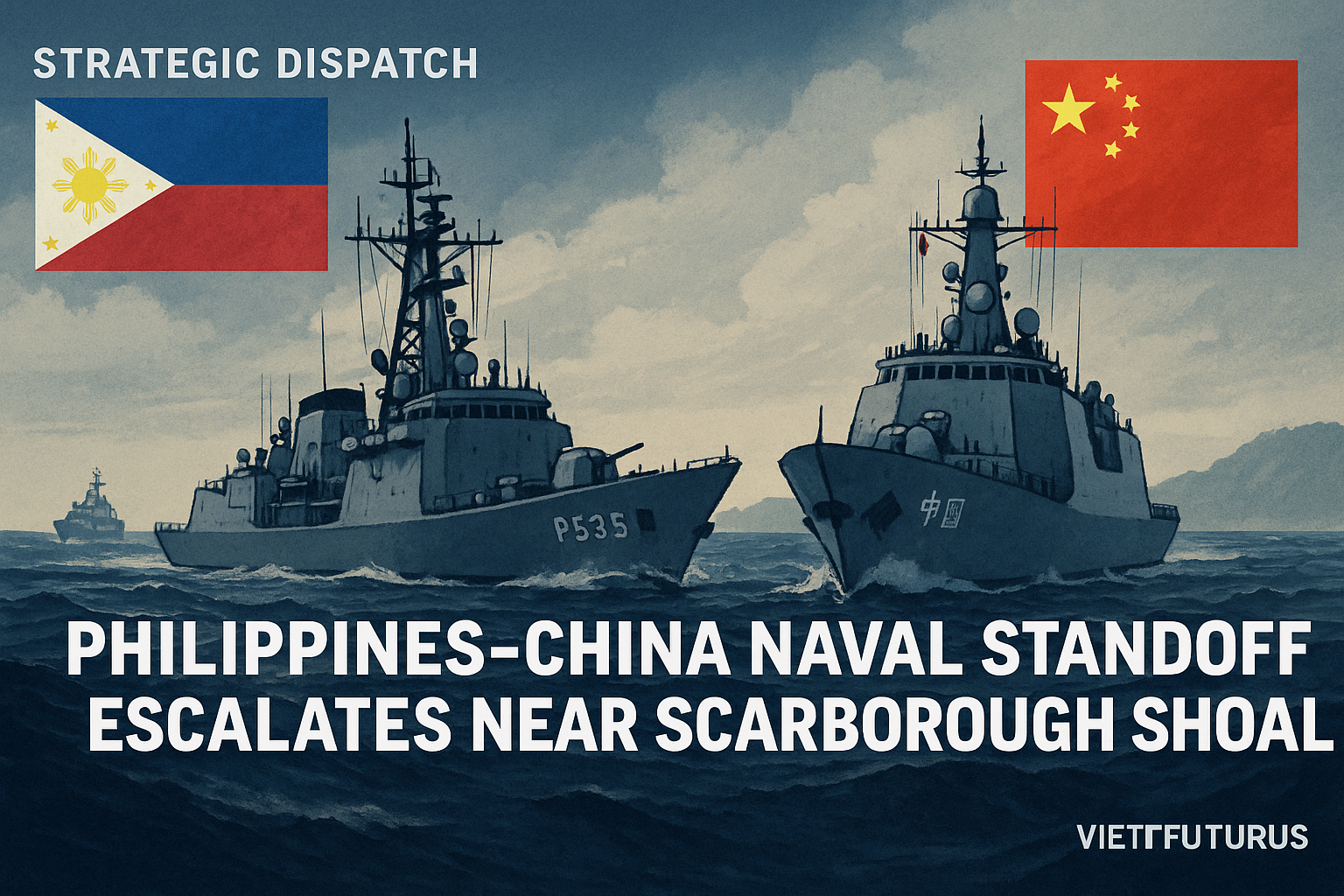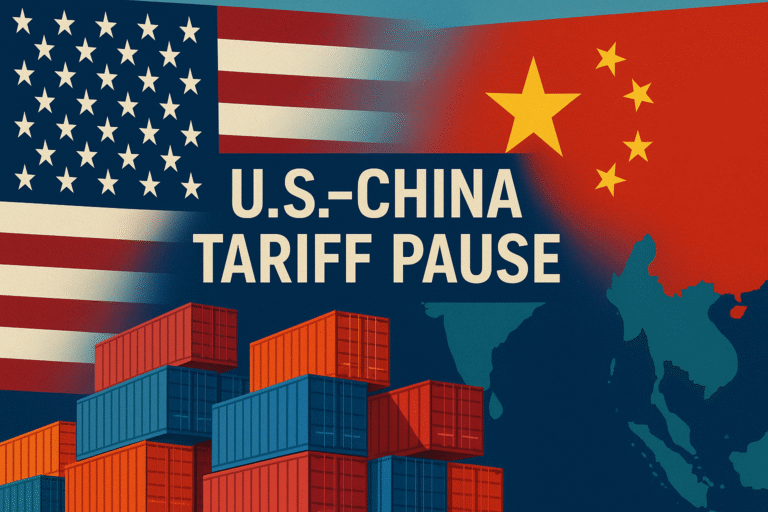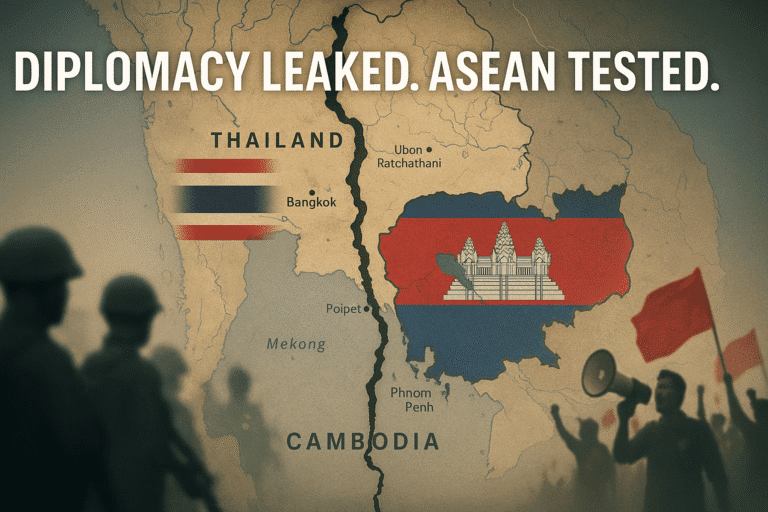Philippines–China Naval Standoff Escalates Near Scarborough Shoal
Philippines China Naval Standoff – Geo Pulse | Strategic Dispatches from Southeast Asia
Key Takeaways
- Two Chinese frigates and a coast-guard cutter executed aggressive, unsafe maneuvers against BRP Emilio Jacinto (PS-35) on 5 May 2025.
- The encounter breaches COLREG navigation rules and raises the legal stakes for Beijing.
- Three strategic paths now loom: calibrated deterrence, miscalculation spiral, or negotiated de-escalation.
- Timing is critical: the Philippine Senate debates expanded joint patrols with the United States next month.
Philippines China Naval Standoff: The 5 May Incident
At 07 : 48 local time, PS-35 was escorting a fisheries patrol near Bajo de Masinloc when PLAN frigate 554 darted 800 m across her bow. A sister ship shadowed within 700 m astern, while China Coast Guard 5403 blocked a starboard turn. Drone footage later showed closure speeds of roughly 15 knots—well inside safe-distance limits under the International Regulations for Preventing Collisions at Sea.
This frontline view of the Philippines China naval standoff demonstrates how quickly routine patrols can slip into crisis when gray-zone tactics meet hard steel.
1 · Strategic Signals Behind the Maneuvers
| Dimension | Message Sent |
|---|---|
| Territorial | Scarborough Shoal sits 124 NM off Luzon and inside Manila’s EEZ; Beijing’s move tests the 2016 Hague ruling that favored the Philippines. |
| Operational | Deploying warships—not only cutters—pushes the Philippines China naval standoff into conventional-force territory. |
| Alliance | The U.S.–Philippines Mutual Defense Treaty could activate if an armed attack occurs. Washington already labels the encounter “reckless.” |
2 · Legal & Diplomatic Fallout
🔍 Signal — COLREG Rule 15 obliges a vessel on a crossing course to yield. The captured video gives Manila solid evidence for the International Maritime Organization.
The Armed Forces of the Philippines has lodged a formal protest and will highlight the Philippines China naval standoff at the ASEAN Defense Ministers’ Meeting in June. Any fresh IMO filing could set a precedent for future unsafe-encounter claims across the South China Sea.
3 · Three Possible Trajectories
a. Calibrated Deterrence (Best Case)
Manila increases presence with José Rizal-class frigates and schedules larger U.S.–Philippines drills. Beijing limits further harassment to coast-guard shadowing.
b. Miscalculation Spiral
Close-quarter theatrics persist; a minor collision draws U.S. Seventh Fleet escort duty, escalating the Philippines China naval standoff into a flash-point.
c. Negotiated De-escalation (Low Probability)
Back-channel talks hammer out rules-of-the-road guidelines akin to the 2014 U.S.–China CUES accord, momentarily cooling the shoal.
4 · Action Points for Stakeholders
- Satellite Tasking — Track AIS-silent movements of PLAN hulls 554 and 573 over the next 30 days.
- Legal Strategy — Monitor Manila’s expected IMO “unsafe encounter” submission; a ruling could redefine regional encounter norms.
- Insurance Watch — Continued tension at Scarborough may lift tanker-lane premiums across the West Philippine Sea, squeezing regional supply chains.
(Internal link →) Deep-dive into maritime gray-zone playbooks in our Strategic Ambiguity dossier.
Closing Signal
Scarborough remains the litmus test for Indo-Pacific stability. Whether this Philippines China naval standoff ends in disciplined deterrence or dangerous drift hinges on how capitals transform outrage into coordinated enforcement. Presence equals sovereignty—but presence without partners invites danger.
Memory Is Power. Signal Is Control.
📢 Call to Action
Get every Geo Pulse straight to your inbox—subscribe to VietFuturus Dispatches and stay ahead of the next Philippines China naval standoff before it hits the headlines.








One Comment